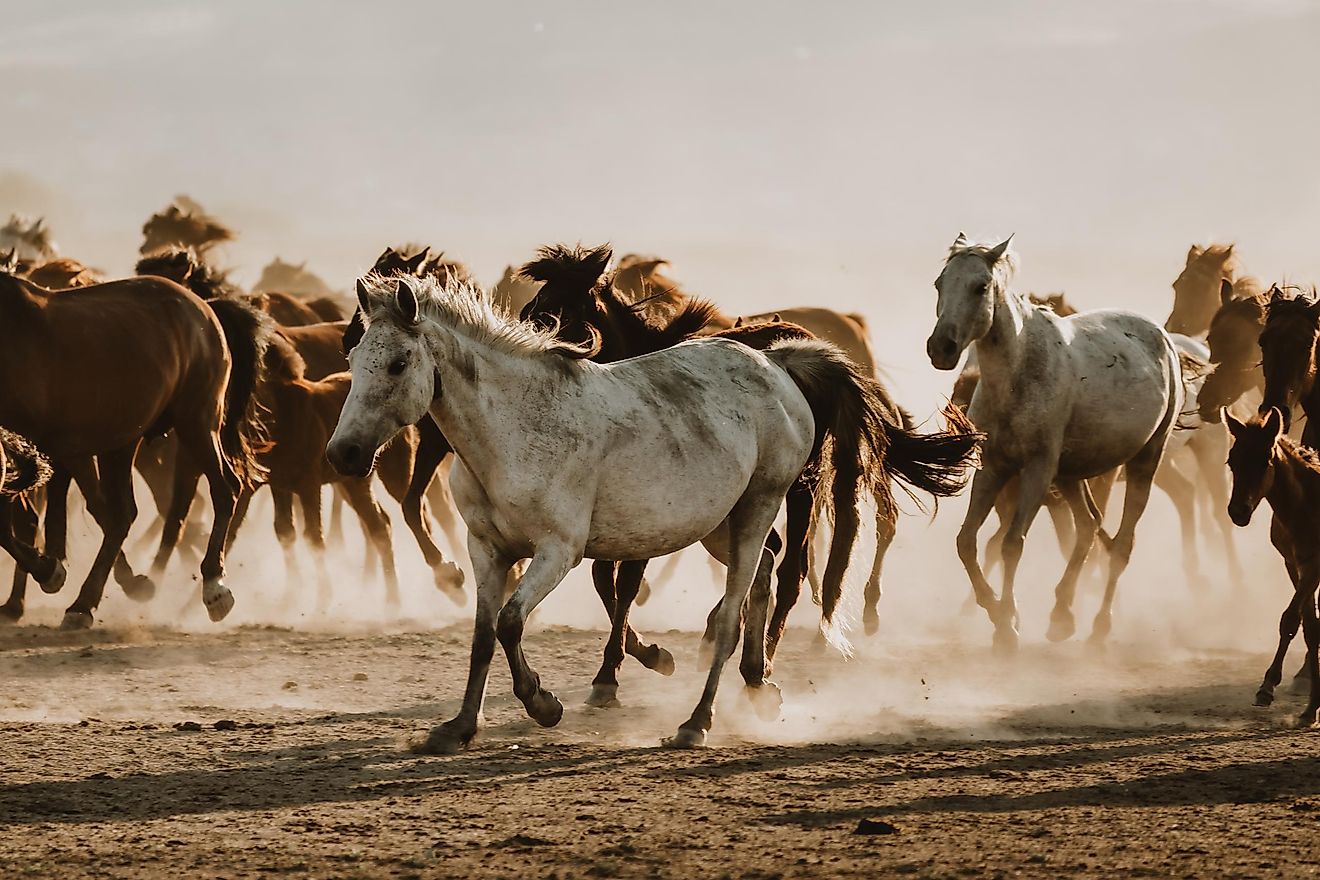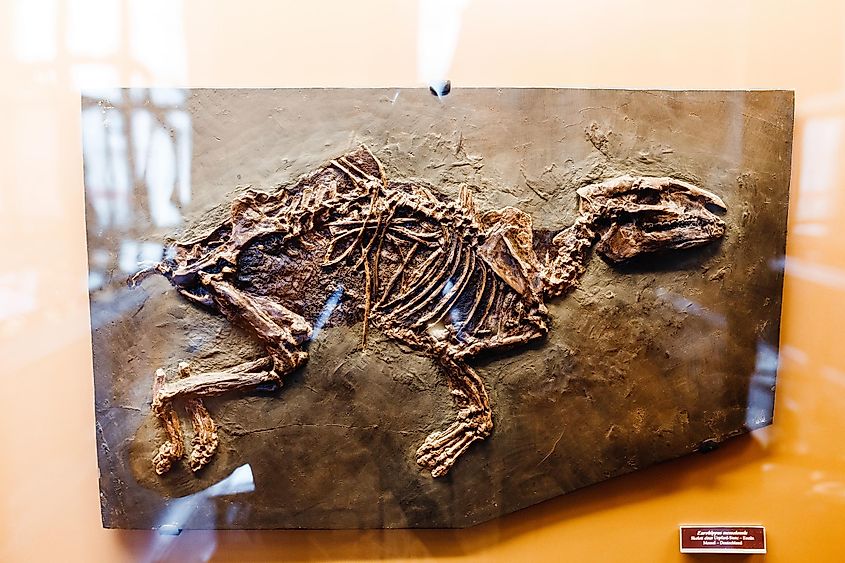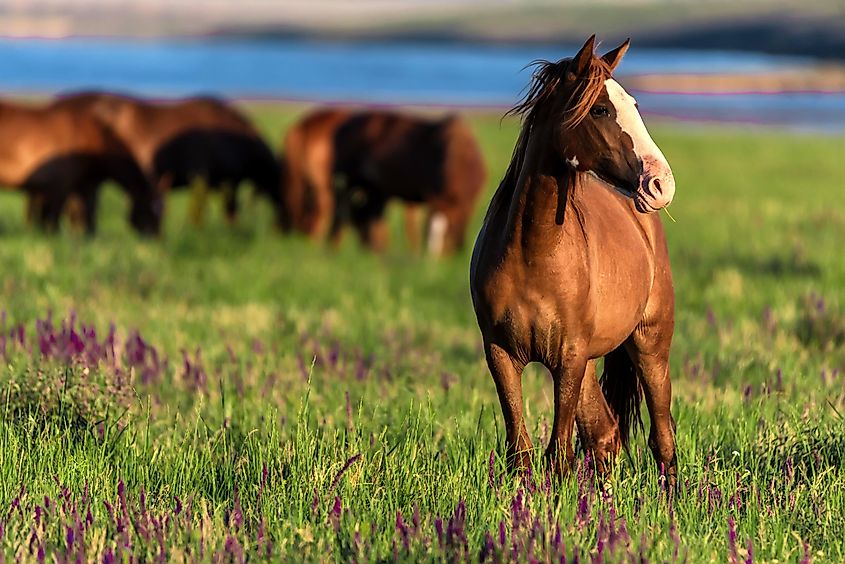When Were Horses Introduced Into North America?

- It is commonly believed that horses are native to the European lands, when in reality, their ancestors came over from the Americas via the Bering Bridge 1 million years ago.
- Having evolved for over 50 million years, Equus stepped out as the genus of the modern horses 1-4 million years ago.
- Horses' agility and intelligence contributes to their pest-like behavior of consuming crops in large amounts, which is unfavorable to farmers.
The Common Theory
Today there are over 9 million horses in the US, including breeds like the American Quarter Horses, Appaloosas, Missouri Fox Trotters, and some rarer breeds like the Shire, Lippizan, Gotland, Caspian and Colonial Spanish Mustangs.
Common knowledge dictates that the first horses were introduced to the Americas by Columbus, who initially brought over smaller breeds followed by larger ones on his four expeditions to the Americas from 1492 to 1504. As the only method for transportation, their purpose was also to help with carrying loads for settlements and to trade with the Indigenous peoples.
Looking Back
In reality, this land has felt the hoofs of the horse's ancestors, dating back 60 million years, and up until their curious extinction in the Americas, 11,000 years ago. Fossils show that an Eohippus, a predecessor to the modern horse, was native to the American lands.
The name Eohippus was given to the earliest species by Thomas Henry Huxley, an English biologist and anthropologist who specialized in comparative anatomy, upon his visit to the United States in 1876. Literally meaning "dawn horse," Eohippus was described as a "timid forest animal" standing at about 13 inches tall, with a hunched back, leopard-like spots, and four toes on each foot. It was pattering these regions over 60,000,000 million years ago.
38 million years ago, Eohippus evolved into the Orohippus, getting rid of its vestigial toes and growing a longer middle toe that would eventually develop into a hoof. Having acquired an additional tooth for grinding to feed on tough plants, it also presented itself with a sturdier body. Then came the Epihippus.

17 million years ago, a much taller horse stepped onto the scene: the Merrychipus. It not only looked like today's, with its elongated snout and long legs (albeit still with three toes), but it also demonstrated agility and intelligence through its ability to escape and out-trick other species as well as humans who made attempts a domesticating the Merrychipus. A few million years later, it evolved into the Dinohippus, which, in another 10 million years evolved into an Equus possessing a long neck and a single toe, as the representative of the genus to the modern horses. Equus emerges 1 to 4 million years ago.
New Home and Extinction
Equus managed to make its way through Alaska into Siberia via the Bering Bridge, about 1,000,000 years ago, spreading by land through Asia and Europe all the way to Africa. Oceania and Antarctica were the only places where the horses never naturally ventured to. Meanwhile, it made a curious disappearance from the Americas 11,000 years ago.
Although it remains uncertain why they went extinct on these lands, evidence suggests that humans might have had something to do with it, as they first made their way to the Americas from Siberia by crossing the Bering Strait around that time. The other two theories state that infectious disease and climate change with a consecutive decline in vegetation might have also been the contributing factors.
Domestication and Re-introduction
The horse evolved further on the Eurasian continent, becoming domesticated and acquiring many characteristics present in today's horses through breeding patterns, making them suitable for labor, horseback riding, and conquering lands, such as during colonization. Therefore, a first trip for the Spaniards to the Americas was a returning trip for the successors of the ancient Eohippus mixed with the European breeds to its native land. These horses were left on the Virgin Islands by Christopher Columbus, but the Spanish explorer Hernán Cortez brought horses on his own expedition from Europe in 1519, reintroducing them to mainland America starting with Mexico.

Modern Horses
Breeding practices over the years also have helped with generating breeds for all kinds of needs: lean horses that are fast runners, bulky horses that are strong and resilient for carrying loads, decorative breeds, as well as procreating those with favorable eating habits.
A little-known fact is that horses, wild horses specifically, can be regarded as pests, as they are capable of consuming large amounts of land resources at a time, including feed for farmers' cattle and the products that farmers grow themselves, such as cabbage, carrots and leafy greens. In the US, this problem has been controversially managed by the Bureau of Land Management, which has proposed to find the solution in sterilization, to help preserve the needed resources for farming. This plan is largely contested, and it is not clear what the US will do to address the issue of wild horses populations.











